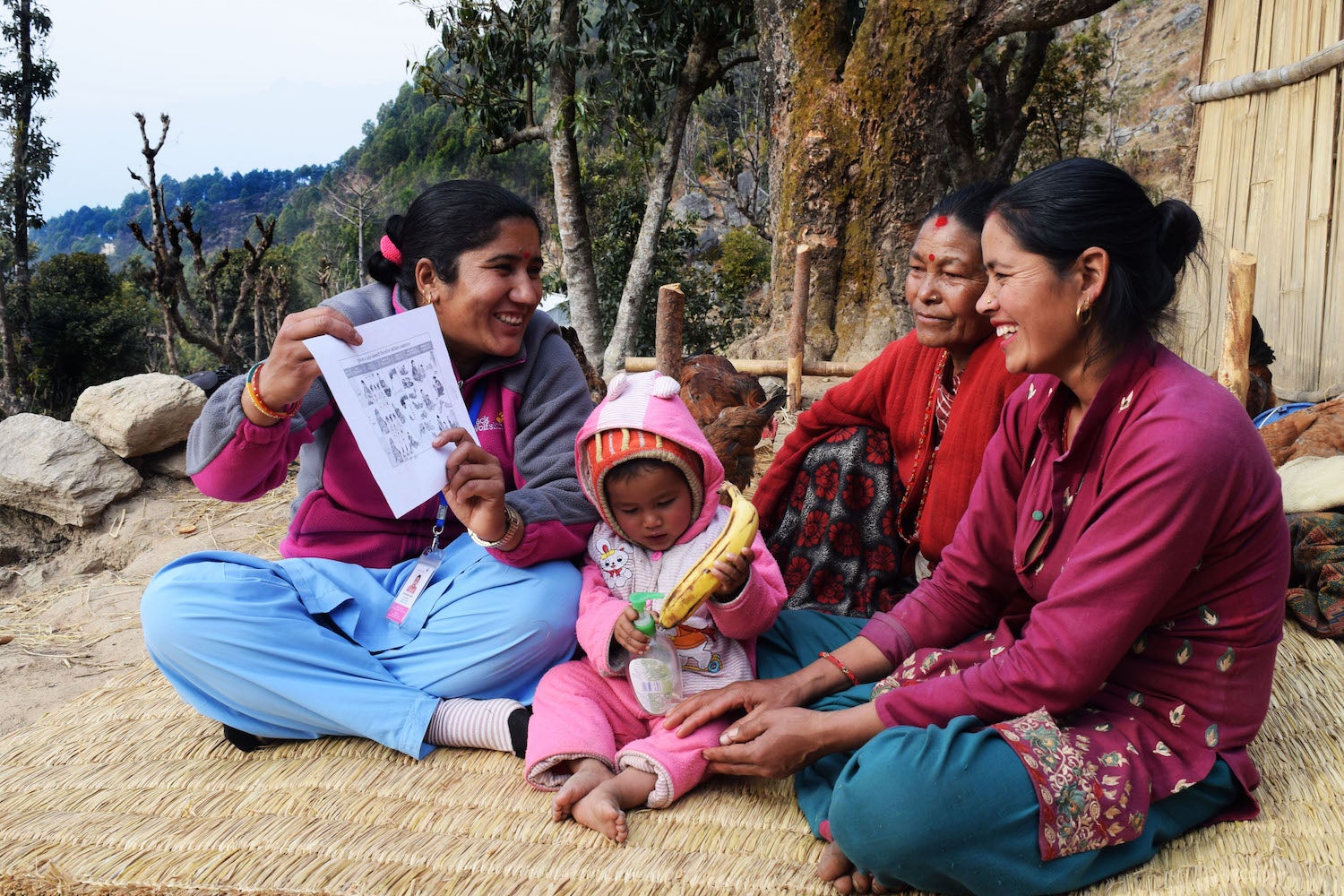Nepal


Nepal is a low-income country with complex geography, limited administrative capacity, and acute fiscal constraints that limit effective and equitable service delivery.314 While the country has made great progress in health in the past 20 years, many Nepali people, especially those in rural areas and mountainous regions, live hours or days from health facilities. Poor or non-existent road infrastructure exacerbates the problem, making it difficult for the government to provide high-quality, comprehensive care that is continuously available in a first-contact and longitudinal manner.516
The private sector makes up a large portion of health care delivery in Nepal. In 2011, the private sector included more than 60% of doctors and over two-thirds of hospital beds.7 However, poor regulation and integration of the private sector into the public health system has created various challenges to effective service coverage in Nepal, especially in disadvantaged, rural areas. 8 Consequently, issues of quality, affordability, accessibility, and fragmentation in both the private and public sector have led to the erosion of public trust in health care institutions and providers.79
However, the private sector has also provided an opportunity to drive innovations and improvements in health in the form of public-private partnerships (PPPs) - partnerships between the government and private sector entities that can help to fund, deliver, and scale health services and infrastructure in order to improve access, equity, and quality of care.7 The Ministry of Health’s PPP with the non-governmental organization Possible is one promising example of how PPPs can be used to strengthen service delivery in an integrated, person-centered manner.910 The partnership manages several programs, including an innovative CHW program, which is helping to strengthen Nepal’s community-based health workforce with the competencies required to meet population health needs, especially in rural and remote areas.4
In Nepal, a lack of reliably available, high-quality, effective PHC poses many challenges to the public sector, most especially in the rural areas of the country. In order for health systems to effectively meet population health needs, there must be competent, motivated health workers that are acceptable, available, and accessible to the communities they serve.
The PPP between the Ministry of Health and Possible has developed a cadre of full-time, salaried CHWs who are trained to provide longitudinal home-based care, integrated into the local health facility system. This program employs full-time, salaried CHWs who are trained to provide integrated, longitudinal home-based care for reproductive, maternal and child health, and non-communicable diseases. The program is designed in line with the WHO’s global best practices for community health programs 11 and the core principles of PHC. Their trained competencies involve: active and passive community-based disease surveillance; home-based diagnosis, treatment, and counseling; triage and referral care to local health facilities; and continual data collection and feedback loops for care follow-up.5129
To address challenges in workforce recruitment, retention, and motivation, the program’s CHWs are full-time salaried employees of the public private partnership who receive on-going training and professional development.45 They are recruited via a formal application process, which engages the local municipality governance body to approve all hires. All CHWs are required to live in the communities they serve, and must be literate, with a high school education. At the time of hiring, they undergo a standardized one-month initial training conducted by Possible community health leadership, and subsequently have regularly-scheduled ongoing professional development and refresher trainings at both the municipality and district levels.4
CHWs are supervised by one local supervisor at the level of the municipality, who are in turn supervised by supervisors at the district level to ensure proper performance management. These supervisors are all employed by Possible, via the public private partnership, and thus are ultimately accountable to the government.4 To ensure the quality of service provision, Possible uses a digital and in-person performance management system to track all CHWs’ performance, providing structured feedback and targeted improvement training for any CHWs not meeting quality standards.4 Through these functions, the program is working to develop a community-based health workforce that has the appropriate competencies to meet local needs, in line with an integrated, person-centered PHC delivery model.5
While the partnership’s integrated, community-based service delivery model has led to improvements in health outcomes 41314, it is currently only serving a small proportion of Nepal’s overall population. 4 More work needs to be done to integrate and scale this program nationally in order to build a stronger health workforce at the community level for all Nepali people. Nonetheless, this partnership has already set a new precedent within Nepal and globally, demonstrating how PPPs can strengthen human resources for health, particularly at the community level, and providing insights into how public sectors can better deliver high-quality PHC in order to achieve universal health coverage. 13